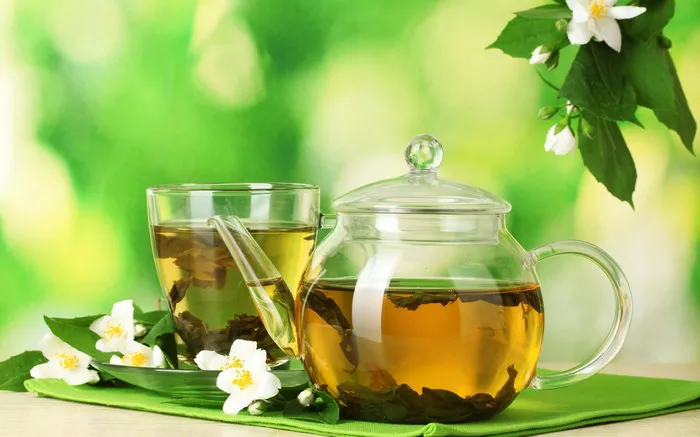Tea, a beverage steeped in tradition and enjoyed across cultures for centuries, holds a special place in the hearts of many. The world of tea is diverse and rich, offering a myriad of flavors, aromas, and health benefits. In this comprehensive guide, we will delve into the six tea basics, covering the main types of tea, their unique characteristics, and the proper methods for brewing each to perfection.
Understanding the Tea Plant
At the heart of all tea varieties lies the Camellia sinensis plant. This evergreen shrub is native to East Asia and is the source of white, green, oolong, black, and pu-erh teas. The different types of tea result from variations in processing methods and oxidation levels. White tea is the least processed, with minimal oxidation, while green tea undergoes a slight oxidation process. Oolong tea falls between green and black teas in terms of oxidation, and black tea is fully oxidized. Pu-erh tea, on the other hand, undergoes a unique fermentation process. Understanding the common origin of all teas provides a foundation for exploring their distinct characteristics.
Exploring the Delicate Nuances of White Tea
White tea, celebrated for its delicate flavor and minimal processing, is a true embodiment of tea in its purest form. Harvested from the youngest leaves and buds, white tea undergoes minimal oxidation and retains a subtle and nuanced taste. Silver Needle and Bai Mu Dan are two well-known varieties of white tea. To brew a perfect cup, use water just below boiling and steep the leaves for a short duration, typically around 2-5 minutes. Embracing the delicate nuances of white tea allows the drinker to appreciate the unadulterated essence of the tea leaf.
Savoring the Elegance of Green Tea
Green tea, celebrated for its fresh and vibrant profile, is a staple in many cultures worldwide. The leaves are quickly heated or steamed to prevent oxidation, preserving their natural green color and antioxidants. Varieties like Sencha, Matcha, and Dragon Well offer diverse flavor profiles. To brew green tea, use water around 175°F (80°C) to 185°F (85°C) and steep the leaves for 1-3 minutes. The subtle grassy notes and vegetal undertones of green tea offer a refreshing and invigorating experience, making it a timeless choice for both casual sipping and mindful ceremonies.
Unveiling the Complexity of Oolong Tea
Oolong tea, a semi-oxidized tea with varying levels of oxidation, presents a unique spectrum of flavors, ranging from floral and fruity to toasty and earthy. This diversity is a result of the intricate processing methods, which can vary widely among different oolong teas. Tie Guan Yin and Dong Ding are well-known oolong varieties. Brew oolong tea with water around 185°F (85°C) to 205°F (96°C), steeping for 3-5 minutes. The art of brewing oolong lies in appreciating the evolving flavors through multiple infusions, revealing the layers and complexities that make this tea a connoisseur’s delight.
Indulging in the Robustness of Black Tea
Black tea, characterized by its full-bodied flavor and rich, dark liquor, undergoes full oxidation during processing. Assam, Darjeeling, and Earl Grey are popular black tea varieties, each offering a distinct taste experience. To brew black tea, use water at a rolling boil and steep the leaves for 3-5 minutes. The result is a bold and robust cup, often enjoyed with or without milk and sweeteners. The depth of flavor in black tea makes it a versatile choice, perfect for a brisk morning wake-up or a comforting afternoon indulgence.
Embarking on the Aged Journey with Pu-erh Tea
Pu-erh tea, a fermented and aged tea hailing from the Yunnan province in China, stands as a testament to the transformative power of time. This unique tea undergoes a natural fermentation process, allowing it to evolve and develop complex flavors over the years. Sheng Pu-erh is the raw, green variety, while Shou Pu-erh is the dark, fermented type. To brew Pu-erh tea, use boiling water and steep the leaves for 2-5 minutes, or for longer periods for multiple infusions. Pu-erh enthusiasts appreciate the earthy, woody, and sometimes smoky notes that develop with each passing year, creating a truly one-of-a-kind tea experience.
Conclusion
In conclusion, the world of tea is a vast and fascinating landscape that caters to a wide range of tastes and preferences. Understanding the six tea basics—white, green, oolong, black, and pu-erh teas—provides a solid foundation for tea enthusiasts to embark on a flavorful journey. Whether you savor the delicate notes of white tea, revel in the vibrancy of green tea, explore the complexity of oolong, indulge in the robustness of black tea, or embark on the aged journey with pu-erh, each cup tells a unique story.
























